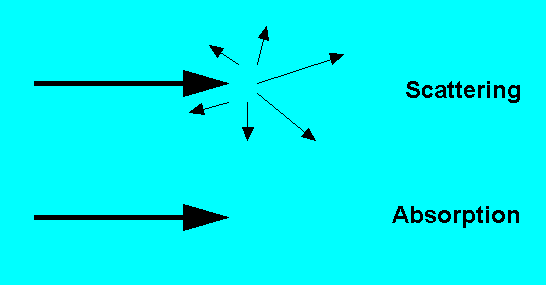 |
 |
 Atmospheric Effects
Atmospheric Effects
Effects of Atmosphere
When electromagnetic radiation travels through the atmosphere, it may be absorbed or scattered by the constituent particles of the atmosphere. Molecular absorption converts the radiation energy into excitation energy of the molecules. Scattering redistributes the energy of the incident beam to all directions. The overall effect is the removal of energy from the incident radiation. The various effects of absorption and scattering are outlined in the following sections.
 Click here to read more about Atmospheric Absorption Click here to read more about Atmospheric Absorption
 Click here to read more about Atmospheric Scattering Click here to read more about Atmospheric Scattering
The wavelength bands used in remote sensing systems are usually designed to fall within these windows to minimize the atmospheric absorption effects. These windows are found in the visible, near-infrared, certain bands in thermal infrared and the microwave regions.
Effects of Atmospheric Scattering on Remote Sensing ImagesAtmospheric scatterring is important only in the visible and near infrared regions. Scattering of radiation by the constituent gases and aerosols in the atmosphere causes degradation of the remotely sensed images. Most noticeably, the solar radiation scattered by the atmosphere towards the sensor without first reaching the ground produces a hazy appearance of the image. This effect is particularly severe in the blue end of the visible spectrum due to the stronger Rayleigh Scattering for shorter wavelength radiation.Furthermore, the light from a target outside the field of view of the sensor may be scattered into the field of view of the sensor. This effect is known as the adjacency effect. Near to the boundary between two regions of different brightness, the adjacency effect results in an increase in the apparent brightness of the darker region while the apparent brightness of the brighter region is reduced. Scattering also produces blurring of the targets in remotely sensed images due to spreading of the reflected radiation by scattering, resulting in a reduced resolution image.

 Airborne Remote Sensing Airborne Remote Sensing
 Go to Main Index Go to Main Index
|
